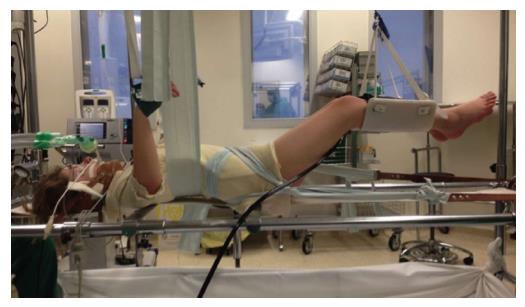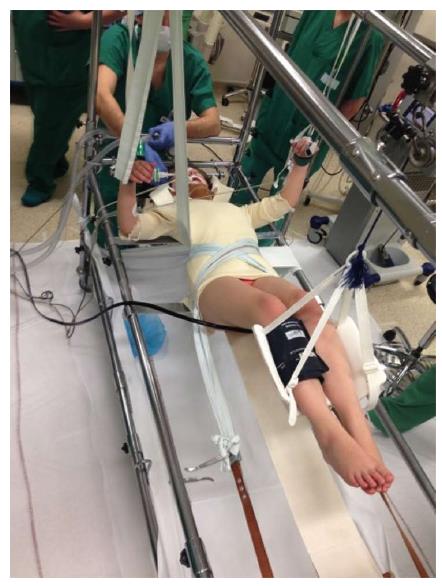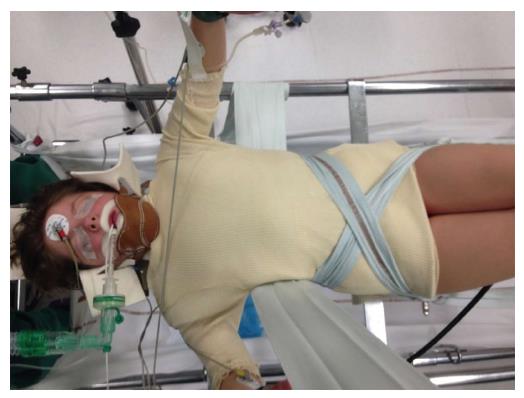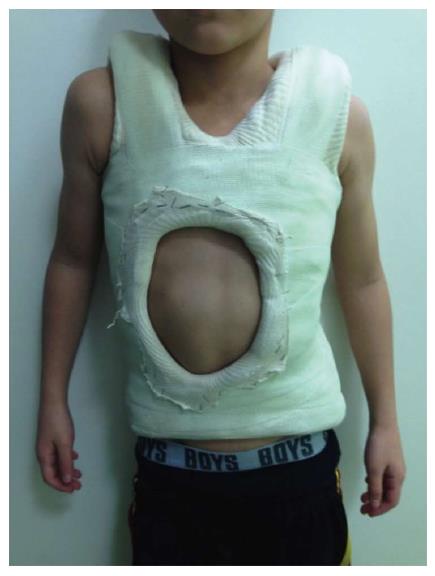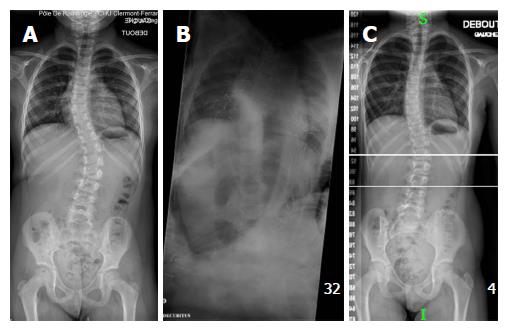Copyright
©The Author(s) 2015.
World J Orthop. Dec 18, 2015; 6(11): 935-943
Published online Dec 18, 2015. doi: 10.5312/wjo.v6.i11.935
Published online Dec 18, 2015. doi: 10.5312/wjo.v6.i11.935
Figure 1 Positioning a patient on a Cotrel frame.
Lateral view. Proximal point of traction is the chin and distal point is at the iliac crests. Harnesses and straps are employed, and amount of traction is controlled.
Figure 2 Positioning a patient on a Cotrel frame.
Bottom view.
Figure 3 Positioning a patient on a Cotrel frame.
Top view. The patient is initially supported by two metal bars, one under the shoulders and the other under the pelvis. At the same time, a strap wrapped around the patient on the convex side of the scoliotic deformity is tensioned in order to reduce it by simultaneously applying lateral and posterior reduction forces.
Figure 4 Spinal deformity correction.
While the plaster is still malleable, one-hand lateral pressure (dotted arrow) is applied on the convexity side (apical vertebra) and two-hand counter-pressure is applied on the concavity side as close as possible to the end vertebrae, and both pressures are maintained until the plaster hardens (red arrows).
Figure 5 Elongation-derotation-flexion plaster.
Final result.
Figure 6 Pre-operative (A) and postoperative (B, C) radiographs in a 7-year-old girl with infantile and juvenile scoliosis.
Forty degree lumbar deformity with 25° thoracic compensatory curve (A); after cast application, the spine is fully corrected (B); Two point five years after cast removal, the deformity has reduced to 20° in both the lumbar and thoracic spine (C).
- Citation: Canavese F, Samba A, Dimeglio A, Mansour M, Rousset M. Serial elongation-derotation-flexion casting for children with early-onset scoliosis. World J Orthop 2015; 6(11): 935-943
- URL: https://www.wjgnet.com/2218-5836/full/v6/i11/935.htm
- DOI: https://dx.doi.org/10.5312/wjo.v6.i11.935













